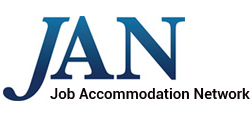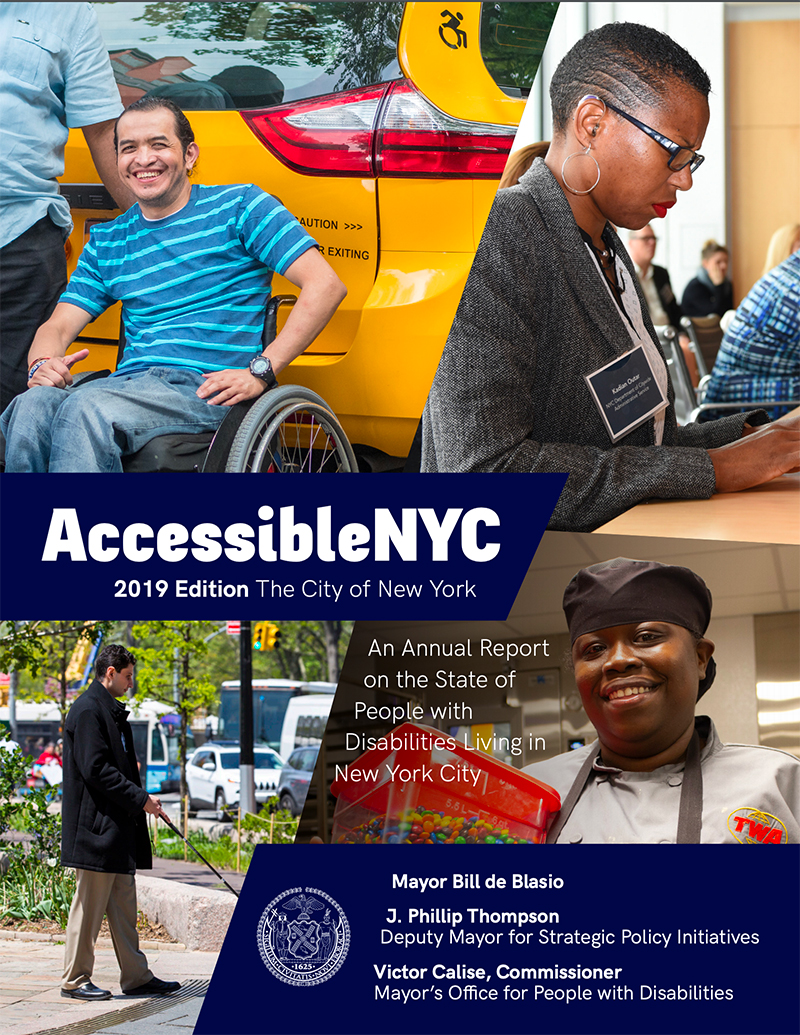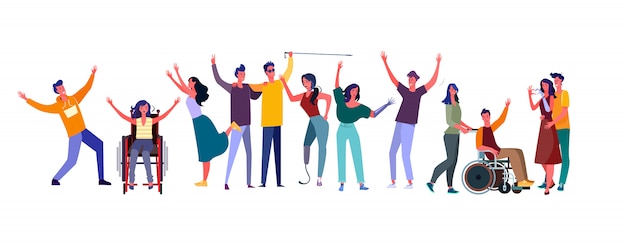Disability Inclusion for NYC’s Small Businesses
This guide is brought to you by Project Access For All with resources created by the NYC Mayor’s Office for People With Disabilities, NYC Small Business Services and other community partners.
It offers tips on making your workplace more accessible for people of all abilities. It also provides information on the benefits of disability inclusion for small businesses.
What is Disability Inclusion?
According to the CDC, “Disability inclusion means...making sure everybody has the same opportunities to participate in every aspect of life to the best of their abilities and desires.”
Help celebrate Disability Pride Month and the 30th anniversary of the Americans with Disabilities Act by taking some practical steps to be more inclusive. If we all work together, we’ll be stronger together!
Discover More
Meet New Yorkers with Disabilities in the NYC at Work Video Series
- Ila Eckhoff - Managing Director at BlackRock
- Sara Tabor - Quality Assurance Director at Code & Theory
- Becky Curran - Coordinator of the Equal Employment Opportunity and Diversity Department at SAG-AFTRA
- Josh Levine – Chief Operations Officer of the Equities Division at Barclays Investment Bank
- Goldine Davis - Third Key at Goodwill
- David Kruysman - FDNY Lieutenant
Table of Contents
- Benefits of Small Businesses becoming Disability Inclusive Workplaces
- Implementing Disability Inclusion at Small Businesses
- Effective Communication: What to Know, What to Say, What to Do
- Digital Accessibility and Assistive Technologies
- Physical Accessibility for Small Businesses
- Finding Additional Resources
Benefits of Small Businesses becoming Disability Inclusive Workplaces
Why is disability inclusion important for your small business? It helps you better serve the 920,000 New Yorkers who report that they live with disabilities.
Businesses that hire people with disabilities and provide accessible, inclusive workplaces and websites:
- Benefit from a wider and more diverse pool of talent and experience.
- Extend their market reach to a sizable base of dedicated customers.
- May qualify for state and federal tax incentives.
- Report higher revenues and greater profits.
- Stand out from less inclusive competitors.
Disability inclusion at the workplace and online is good business for everyone.
Discover More

Learn how Disability Inclusion Benefits Small Business
Implementing Disability Inclusion at Small Businesses
By law, businesses must offer everyone equal access to goods, services, and employment opportunities. Small businesses can take practical actions to make their workplaces more inclusive to employees and customers alike.
What Laws Must I Follow?
The laws that businesses need to be aware of fall into two categories:
- Laws that prohibit discrimination against people with disabilities. These include the New York City Human Rights Law, the New York State Human Rights Law, and the federal Americans with Disabilities Act.
- Local zoning regulations that set minimum standards for physical accessibility in new and existing buildings such as New York City Local Laws 47 and 122.
What if I Can't Make the Required Changes?
You may be surprised to find that there are many cost-effective and low-tech solutions to meeting the legal requirements for accessibility. However, in some cases, businesses can receive exemptions if the legal accessibility standards are deemed “an undue burden” (i.e. too expensive for the size and revenue of a particular business) or not “readily achievable (i.e. impossible due to space restrictions).” But, remember, disability inclusion is more than just legal compliance.
So What Steps Can I Take to Make My Business More Disability Inclusive?
If you’re ready to take the steps to become a disability inclusion leader, the Employer Assistance and Resource Network on Disability Inclusion (EARN) highlights seven essential business practices that can help create inclusive workplaces:
- Foster an inclusive business culture that treats people of all abilities equally.
- Ensure inclusive outreach and recruitment of people with disabilities.
- Promote inclusive hiring and employee retention processes.
- Provide accommodations that enable all employees to do their jobs effectively.
- Show your commitment to disability inclusion through staff training, signage, advertisements, and websites.
- Remove as many physical and technological barriers in your workplace as possible.
- Promote accountability through internal policies and periodic assessment.
Discover More

Talking About Inclusion@Work Discussion Guide Series by EARN
- Download the Lead the Way:Inclusive Business Culture Guide
- Download the Build the Pipeline:Outreach & Recruitment Guide
- Download the Hire (& Keep) the Best:Talent Acquisition & Retention Processes Guide
- Download the Ensure Productivity:Reasonable Accommodations Guide
- Download the Communicate:External & Internal Communication of Company Policies & Procedures Guide
- Download the Be Tech Savvy:Accessible Information & Communication Technology Guide
- Download the Measure Success:Accountability & Self-Identification Guide

Approaching the ADA as an Opportunity
Effective Communication
Effective communication means making essential information about your business's services and products understandable by customers of all abilities.
Train your staff to communicate essential information to customers and colleagues in various ways. For example, staff can read or use large print and braille menus and product tags for people with visual impairments. They can utilize smartphone speech-to-text apps and TTY devices to communicate with clients and colleagues who are deaf or hard of hearing. Being prepared to communicate through alternate means can ensure quality customer service to all.
Becoming familiar with basic disability etiquette can go a long way toward feeling more comfortable and confident in serving and working alongside people with disabilities.
Effective communication also requires outreach. You can attract potential employees and reach future customers from the disability community by:
- Promoting your commitment to inclusion at job fairs that target job seekers with disabilities.
- Publicly sharing internal policy documents that demonstrate your support of disability inclusion.
- Featuring people with disabilities in your promotional material.
- Indicating on your storefront and website the measures you have taken to achieve accessibility.
Make your business services and products understandable to all. Effective communication helps everyone feel more comfortable and welcome.
Discover More

What to Know, What to Say, What to Do Resources
- Download the CDC's short guide to People First Language
- What to Know, What to Say, What to Do: General Tips
- What to Know, What to Say, What to Do: d/Deaf and Hard of Hearing Tips
- What to Know, What to Say, What to Do: Blind and Visual Impairments Tips
- What to Know, What to Say, What to Do: Mobility Impairments Tips
- What to Know, What to Say, What to Do: Cognitive Impairments Tips
Learn Best Practices in Customer Service from People with Disabilities

Take a Free Online Micro-Course in Disability Etiquette
Digital Accessibility and Assistive Technologies
Business no longer only takes place in brick and mortar storefronts. Websites and social media accounts are essential to many small businesses. However, have you ever considered whether your business’s online presence is as accessible to a blind person as it is to a sighted person?
As online communication has become more essential to everyday life, ensuring that your business is digitally accessible makes good business sense, and in some respects is required by law.
Digital accessibility means designing electronic communications so that people of all abilities can understand and use them effectively.
Assistive technologies can help people interact with their electronic devices, software, and websites. Take a look around your office—do you have an ergonomic keyboard? A lumbar pillow? An adjustable chair? We all use assistive technologies. When it comes to digital accessibility, some of the more common assistive technologies are:
- screen readers that transform text and image captions into spoken words
- screen magnifiers that allow people to enlarge text and images
- special keyboards and navigating devices for those who may find using a mouse challenging
- amplified microphone headsets for people who are hard of hearing
Consider the accessibility of your website, e-commerce platform, and digital media across the following categories:
Visual: How well can a blind person or someone with a visual impairment use your website?
- Are you using legible typefaces in large sizes?
- Do you use high color contrast?
- Do your images have descriptive captions or alt-tags for screen readers?
Auditory: How well can a Deaf person or someone who is hard of hearing understand your digital media?
- Do you provide transcripts for videos and audio recordings?
- Are your videos closed captioned?
Motor skills: How well can someone with a mobility impairment interact with your website?
- Can your website be navigated with a keyboard?
- Is there enough space around links?
Cognitive: How well can a person comprehend and intuit how to navigate your website?
- Is your content written in plain language?
- Do you use clear headings, subheadings, and navigational menus?
For businesses that sell items online, it’s important that your e-commerce site also meets digital accessibility standards. In addition to making sure your product images use captions or alt-texts, you should fully describe your products for all consumers. Check to be sure that your online checkout system and payment processor are fully accessible as well.
If you hold remote meetings or teleconferences with your employees or clients, make sure your software platform can accommodate screen readers, manual captioning, automatic transcription, and keyboard shortcuts.
Use MOPD’s Basic Website Accessibility Checklist to see how your site measures up to recognized accessibility standards and learn how you can make some easy changes to improve your business’s digital accessibility.
Discover More


Learn about Digital Accessibility Standards

Explore Reasonable Accommodation Options
Physical Accessibility for Small Businesses
Imagine yourself sitting in a wheelchair outside your place of business. Would you be able to reach the door?
Imagine you have severe arthritis. Would you be able to open the door?
Imagine walking into your business with a service animal. Would a staff member ask you to leave?
Imagine that you have a visual impairment, would a staff member be available to help you navigate through the aisles?
These are just some commonplace scenarios that people with disabilities face everyday. Making sure our commercial spaces are physically accessible provides everyone with the equal ability to use the business’s goods or services, and in the case of employees, to complete their job responsibilities in an integrated environment.
Anyone who owns, operates, or leases space to a small business shares the legal responsibility for meeting physical accessibility standards. These standards are spelled out in Title III of the federal Americans with Disabilities Act and your local business codes. For example, in NYC, Law 122 states the requirements related to portable ramps and signage in prior code buildings, and Law 47 details requirements related to signage at building entrances.
Yet physical accessibility involves more than ramps or signs. It requires an empathetic understanding of everyone's needs.
For instance, if a person in a wheelchair can’t reach your business’s door because of the lack of a ramp or space for a portable ramp, get creative! You can offer an alternative such as curbside delivery service. There are many ways to improve the physical accessibility of your business, and accommodating the needs of people with disabilities doesn’t have to be costly or burdensome. In fact, you may find that physical accessibility makes interactions in your workplace more comfortable for everyone.
Discover More

NYC MOPD Resources for Physical Accessibility

Special Considerations for Restaurants and Food Service
Finding Additional Resources
The Mayor's Office for People with Disabilities offers a wide range of helpful resources for NYC small businesses. Visit their website and download their Small Business Guide.
Contact BID staff to help you connect with other local service providers and resources.
Check out some of the additional links listed below. They will lead you to many other useful resources.
Finding out more about disability inclusion will help you improve your workplace to better serve everyone.
Discover More

NYC Mayor's Office for People with Disabilities

The Job Accommodation Network







